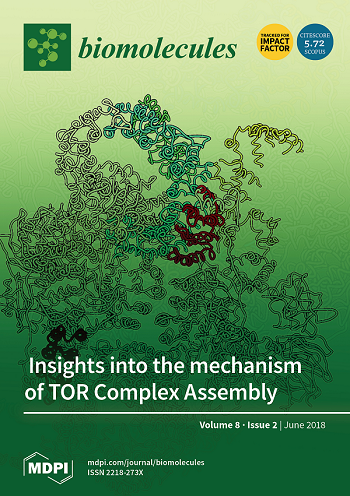摘要
通过棕榈酰化(16 碳脂肪酸与半胱氨酸残基的硫酯连接)对蛋白质进行翻译后修饰,可逆地增加其对膜中富含胆固醇的脂质筏的亲和力,从而改变其功能。人们对棕榈酰化的改变如何影响系统水平的功能并导致中枢神经系统病理学知之甚少。然而,最近的研究表明,棕榈酰乙酰转移酶(DHHC)21 基因表达的下调在重度抑郁症(MDD)样综合征的发生中起着一定的作用。在此,我们试图研究在失乐症自发恢复阶段,压力诱导的失乐症易感性(蔗糖偏好低于65%)或恢复性(蔗糖偏好大于65%)如何影响C57BL/6J小鼠海马中的DHHC基因表达。由于多发性抑郁症是一种反复发作的疾病,因此了解该疾病症状阶段以及暂时缓解状态的分子机制非常重要。事实上,目前对缓解期应用药物治疗的相关分子变化还不甚了解。因此,我们利用小鼠慢性应激模型来解决这些问题。应激方案包括大鼠暴露、社交失败、束缚应激和悬尾。应激组的小鼠未接受任何治疗,或通过饮用水接受丙咪嗪(7 毫克/千克/天),或在应激前 7 天开始腹腔注射琥珀酸地高辛(DS;25 毫克/千克/天),并在为期 14 天的应激过程中持续注射。对照组要么未接受治疗,要么接受两种药物中任何一种的治疗。在应激后的第 1 周,进行了蔗糖偏好、强迫游泳、新笼和恐惧条件反射测试;在应激后第 31 天,对所有小鼠进行了蔗糖测试和为期 5 天的莫里斯水迷宫测试,然后将小鼠处死。对海马进行了转录组Illumina分析。利用 RT-PCR 技术研究了海马中 Dhhc3、Dhhc7、Dhhc8、Dhhc13、Dhhc14 和 Dhhc21 基因的表达。我们发现,慢性应激降低了亚组小鼠的蔗糖偏好,这些小鼠还表现出长时间的漂浮行为、行为振奋和情境恐惧条件反射受损,而听觉条件反射则没有改变。在缓解阶段,蔗糖测试没有发现任何变化,而莫里斯水迷宫的习得在所有组别中都没有变化。在失神动物中,Dhhc8的表达降低,而Dhhc14的表达升高。使用其中一种药物进行抗抑郁治疗可部分缓解基因表达变化和行为异常。我们的数据表明,Dhhc8和Dhhc14很可能与抑郁症缓解阶段的机制有关,可作为预防性治疗的靶点。Post-translational modifications of proteins via palmitoylation, a thioester linkage of a 16-carbon fatty acid to a cysteine residue, reversibly increases their affinity for cholesterol-rich lipid rafts in membranes, changing their function. Little is known about how altered palmitoylation affects function at the systemic level and contributes to CNS pathology. However, recent studies suggested a role for the downregulation of palmitoyl acetyltransferase (DHHC) 21 gene expression in the development of Major Depressive Disorder (MDD)-like syndrome. Here, we sought to investigate how susceptibility (sucrose preference below 65%) or resilience (sucrose preference > 65%) to stress-induced anhedonia affects DHHC gene expression in the hippocampus of C57BL/6J mice during the phase of spontaneous recovery from anhedonia. Because MDD is a recurrent disorder, it is important to understand the molecular mechanisms underlying not only the symptomatic phase of the disease but also a state of temporary remission. Indeed, molecular changes associated with the application of pharmacotherapy at the remission stage are currently not well understood. Therefore, we used a mouse model of chronic stress to address these questions. The stress protocol consisted of rat exposure, social defeat, restraint stress, and tail suspension. Mice from the stress group were not treated, received imipramine via drinking water (7 mg/kg/day), or received intraperitoneal injections of dicholine succinate (DS; 25 mg/kg/day) starting 7 days prior to stress and continuing during a 14-day stress procedure. Controls were either untreated or treated with either of the two drugs. At the 1st after-stress week, sucrose preference, forced swim, novel cage, and fear-conditioning tests were carried out; the sucrose test and 5-day Morris water maze test followed by a sacrifice of mice on post-stress day 31 for all mice were performed. Transcriptome Illumina analysis of hippocampi was carried out. Using the RT-PCR, the hippocampal gene expression of Dhhc3, Dhhc7, Dhhc8, Dhhc13, Dhhc14, and Dhhc21 was studied. We found that chronic stress lowered sucrose preference in a subgroup of mice that also exhibited prolonged floating behavior, behavioral invigoration, and impaired contextual fear conditioning, while auditory conditioning was unaltered. At the remission phase, no changes in the sucrose test were found, and the acquisition of the Morris water maze was unchanged in all groups. In anhedonic, but not resilient animals, Dhhc8 expression was lowered, and the expression of Dhhc14 was increased. Antidepressant treatment with either drug partially preserved gene expression changes and behavioral abnormalities. Our data suggest that Dhhc8 and Dhhc14 are likely to be implicated in the mechanisms of depression at the remission stage, serving as targets for preventive therapy.

 求助内容:
求助内容: 应助结果提醒方式:
应助结果提醒方式:


